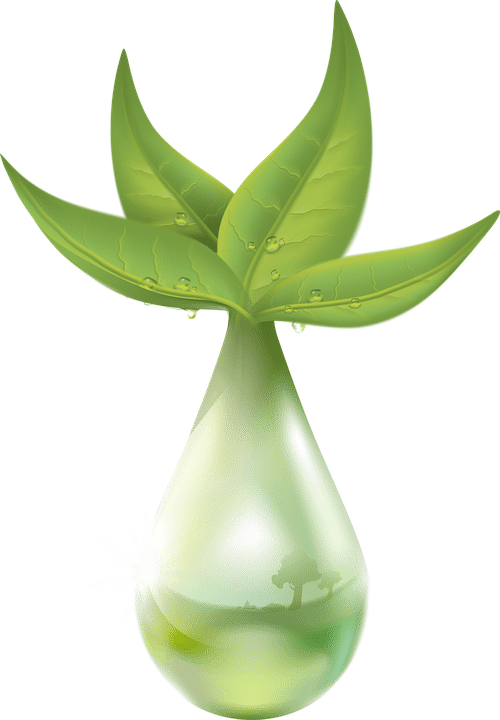Green solvents are meant to spare human health and the environment. They’re measured by green chemistry principles such as waste prevention, atom economy (i.e., full use of materials), less hazardous syntheses, safe chemical design, energy efficiency, renewability, reduced derivatives, catalysis, biodegradability, pollution prevention, and accident prevention. [1] In a perfect world, the perfect green solvent would get an A+ on each criterion. Green chemistry, however, may involve mitigating harm rather than a complete lack thereof.
A recent review explored green solvents for lipid extraction. [2] The solvents fell into one of three categories: organic-based solvents, ionic liquids (including deep eutectic solvents), and carbon dioxide (CO2).
Lipid Extraction with Organic-Based Green Solvents
Organic-based green solvents include ethanol derived from renewable feedstock and even petroleum-derived solvents such as cyclopentyl methyl ether (albeit lacking renewability). However, the review also included terpene solvents, particularly D-limonene, α-pinene, and p-cymene.
The researchers note that, paired with Soxhlet extraction on microalgae, terpenes achieved 100% solvent recovery using a Simultaneous Distillation and Extraction Process (SDEP). [3] Purity levels indicated that the solvent could be recycled to other ends, including other SDEP processes.
Pretreatment prior to extraction with organic-based solvents can improve outcomes with techniques like ultrasound and microwave treatment that “[aim] to break the cell wall so that intracellular lipids become available for extraction.”
Lipid Extraction with CO2
Supercritical CO2 extraction is generally considered the gold standard for green extraction. [4] CO2 is better suited for extracting higher yields of lipids from microalgae compared to yeast cells. [5,6] Again, pretreatment can be instrumental to higher success rates, and “the appropriate [pretreatment] method is conditioned by the morphological characteristics of the material to be extracted.”
Because of CO2’s nonpolar nature, the addition of cosolvents like ethanol to increase the extraction of polar compounds has been investigated. However, success depends on what you’re trying to extract, with some studies revealing a reverse effect. [7,8] The review didn’t cover cannabis extraction (other than seeds) where cosolvents are commonly used to boost yield and efficiency.
Lipid Extraction with Ionic Liquids
Ionic liquids (ILs) are organic salts, stable and liquid at low temperatures (< 100°C). Because of the viscosity of ionic liquids – an obstacle to extraction efficacy – the use of a cosolvent is required. Methanol has proven to be one such effective cosolvent, though not a green solvent. Microwave and ultrasound irradiation also reduce the viscosity of ionic liquids.
Ionic liquids may seem greener in theory than in practice. Their synthesis may involve toxic compounds and consume lots of energy, and their biodegradability is dubious.
Deep eutectic solvents (DESs) are like ionic liquids in properties, but they are cheaper, easier, renewable, and biodegradable. Data on DESs is still limited, however.
Bottom Line
The reviewers note that the implementation of green extraction technologies, let alone the replacement of non-green ones, is a long process subject to market competition.
“With the reduction in price and the restriction and greater regulation of fossil solvents with stricter laws, the operating costs associated with the use of these solvents should include greater equipment monitoring and emissions control, which may result in increased costs in the use of traditional fossil solvents and pave the way for the use of greener technologies.” [2]
References:
- Anastas PT, Warner JC. Green Chemistry: Theory and Practice. Oxford University Press; 2000.
- de Jesus SS, Filho RM. Recent advances in lipid extraction using green solvents. Renewable and Sustainable Energy Reviews. 2020;133(110289). Journal Impact Factor = 12.110; Times Cited = 2 (Semantic Scholar)
- Tanzi CD, Vian MA, Chemat F. New procedure for extraction of algal lipids from wet biomass: A green clean and scalable process. Bioresour Technol. 2013;134: 271–5. Journal Impact Factor = 7.539; Times Cited = 106 (Semantic Scholar)
- Lupoi J. From gaseous monster to superhero for green extraction and purification. Extraction Magazine. Jan-Feb 2021.
- Alhattab M, Kermanshahi-pour A, Brooks MS-L. Dispersed air flotation of Chlorella saccharophila and subsequent extraction of lipids – effect of supercritical CO2 extraction parameters and surfactant pretreatment. Biomass Bioenergy. 2019;127: 105297. Journal Impact Factor = 3.551; Times Cited = 5 (Semantic Scholar)
- Duarte SH, dos Santos P, Michelon M, Oliveira SMP, Martínez J, Maugeri F. Recovery of yeast lipids using different cell disruption techniques and supercritical CO2 extraction. Biochem Eng J 2017;125:230–7. Journal Impact Factor = 3.475; Times Cited = 13 (Semantic Scholar)
- Babova O, Occhipinti A, Capuzzo A, Maffei ME. Extraction of bilberry (Vaccinium myrtillus) antioxidants using supercritical/subcritical CO2 and ethanol as co-solvent. J Supercrit Fluids. 2016;107:358–63. Journal Impact Factor = 3.744; Times Cited = 13 (Semantic Scholar)
- Andrade KS, Trivellin G, Ferreira SRS. Piperine-rich extracts obtained by high pressure methods. J Supercrit Fluids 2017;128:370–7. Journal Impact Factor = 3.744; Times Cited = 17 (Semantic Scholar)
Image Credits: Gorkhs / Pixabay












